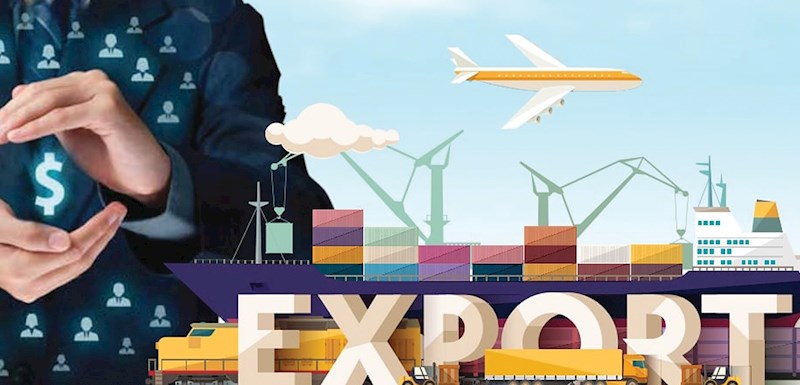Forecasting the Impact of Tariffs on Insurance
4/19/2025
The concerns regarding retaliatory taxes, although temporarily postponed, still remain a potential risk for the economy in general and the insurance market in particular. The Securities Investment Newspaper recently held an interview with Mr. Nguyễn Anh Tuấn, Vice President of the Vietnam Insurance Association (IAV), and Chairman of the Vietnam National Reinsurance Corporation (Vinare, ticker code VNR), to discuss this issue.


Mr. Nguyễn Anh Tuấn, Vice President of the Vietnam Insurance Association (IAV), and Chairman of the Vietnam National Reinsurance Corporation (Vinare)
Last weekend, US President Donald Trump announced a 90-day suspension of retaliatory tariffs on 75 trading partner countries, including Vietnam. It can be seen that the tax delay is only temporary, but in the long term, how will this tax policy affect the Vietnamese insurance market?
The tariff policy of President Donald Trump, if implemented, especially during the peak of the US-China trade war, has caused significant disruptions in the global supply chain, international trade, and investment environment.
The Vietnamese insurance market is closely affected by economic and social fluctuations, especially in commercial insurance operations such as property insurance, technical insurance, and cargo insurance. Changes in import-export activities, foreign direct investment, and business production scales will directly impact the revenue and operating costs of Vietnamese insurance companies, especially those with a focus on commercial insurance.
Specifically, for cargo insurance, there may be a reduction in demand for insurance: With high tariffs, exports from Vietnam to the US may decrease, leading to a decrease in demand for export cargo insurance. The imposition of tariffs increases the cost of exporting Vietnamese goods to the US, particularly in key sectors such as textiles, seafood, and electronics. This may reduce export turnover, impacting Vietnam's economic growth. When the economy slows down, the demand for insurance from businesses and individuals may decrease due to reduced income.
In addition, manufacturers may change their export goods structure to minimize the impact of tariffs, which leads to a change in the types of goods needing insurance, affecting the revenue and risks of insurance companies. This also increases the risks for goods during transportation (as manufacturers search for new markets, they may have to transport goods to higher-risk areas, such as conflict zones, piracy-prone regions, etc., leading to higher insurance risks), thus affecting insurance premiums. Insurance companies may have to adjust premiums to reflect these changes.


Commercial insurance is strongly impacted by the tariff policy of the US
What about other important lines of insurance, such as property and technical insurance, liability insurance, health insurance, and motor vehicle insurance?
With the new tariff policy, key export sectors to the US (textiles, leather, electronics, furniture, etc.) from Vietnam may see reduced investment or even scaled-back production due to a decrease in orders, leading to a reduced demand for insurance for fixed assets of businesses in these sectors (factories, machinery, equipment, goods).
If Vietnam becomes less attractive to foreign investors due to the impact of US tariffs, foreign direct investment (FDI) in manufacturing sectors may decrease. This would mean a reduction in the demand for insurance for newly established assets from FDI. The supporting industries and logistics services for exports to the US may also be affected, leading to reduced demand for insurance for assets in these sectors (warehouses, transportation vehicles, etc.).
Fluctuations in the insured party's business operations may change the risk levels of the insurance policy, thus affecting the appropriateness of pricing. The demand for stock insurance and increased risk of loss (including accumulation of goods and moral hazards): The amount of goods in stock may increase when businesses face difficulties exporting to the US, leading to higher inventory levels and subsequently a higher demand for stock insurance.
The risk of loss may increase due to the concentration of a large amount of goods at one location, the risk of damage due to prolonged storage, as well as the financial pressure on businesses in the face of difficult business conditions, which could lead to cases of intentional insurance claims (destruction, fire, etc.) to seek compensation.
For liability insurance, export businesses may be affected. Export companies directly to the US or indirectly through third countries may face higher costs, reduced revenue, and even lose access to the market. As a result, the demand for liability insurance may decrease as businesses tighten spending and reassess their risk protection investments.
Regarding health insurance, if the Vietnamese economy is under pressure from reduced exports and rising costs, individuals and businesses may cut their spending, including voluntary health insurance.
For motor vehicle physical damage insurance, car sales may decrease. If the tax rate increases, reducing economic growth, people’s incomes may be affected, leading to a decrease in car purchases. When car sales decline, the physical damage insurance market will also be impacted. Increased repair costs and inflationary pressures may increase compensation costs due to rising risks.
What about the financial investment channels of insurance companies?
The policy of increasing taxes and protectionist measures by President Donald Trump, if implemented, may impact global financial markets and, in Vietnam, insurance companies could also face difficulties:
Firstly, the decreasing interest rate environment and narrowing investment margins may make traditional investments such as deposits and bonds struggle to achieve the expected returns.
Secondly, the stock investment channel is highly volatile, with increased risks, posing challenges for insurance companies aiming to increase their stock allocation in portfolios to improve investment yields.
Thirdly, there is a lack of long-term, stable investment tools. While the international market offers a variety of financial products that are suitable for the long-term investment needs of the insurance sector, the capital market in Vietnam lacks depth. Global policy uncertainties force insurance companies to accept lower returns or higher risks if they want to expand their investment channels. Disruptions in global trade also create pressure on exchange rates and domestic inflation, thus affecting the valuation of investment assets and long-term provisions.
What should reinsurance businesses pay attention to?
The inflationary pressure and exchange rate fluctuations due to tariffs can also increase operating costs for insurance companies, particularly those dependent on reinsurance from the international market. Therefore, non-life insurance companies may proactively reassess their reinsurance programs to adapt to the new situation, as some lines of business may see a decrease in reinsurance demand, while other types of risks may require greater reinsurance protection (for example, credit insurance, cyber security, product liability, and professional liability insurance).
If the business situation of insurance companies faces difficulties due to reduced revenue, increased claims rates, etc., international reinsurers may reconsider their commitment levels and reinsurance terms for the Vietnamese market.
The imposition of tariffs could weaken the VND against the USD, while international reinsurance contracts are often settled in foreign currencies (mainly USD). This increases the foreign currency costs that Vietnamese insurance companies must pay to reinsurers, and these costs will rise if there is no effective exchange rate risk management strategy. Rising inflation could also reduce the real value of the premiums collected, making it difficult to maintain the reinsurance payout ratio.
As a national reinsurance company, Vinare always closely monitors global economic and political developments to promptly assess impacts and adjust strategies, while working closely with partners (domestic non-life insurance companies, international reinsurers) and relevant regulatory authorities to develop appropriate and timely solutions in response to market fluctuations.
Source: Tin nhanh chung khoan
Source: Tin nhanh chung khoan










